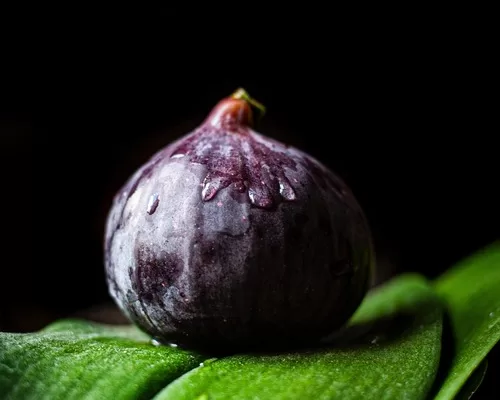It’s only normal to have questions regarding the growing, maintenance, and potential uses of the mysterious Ficus carica ‘Black Mission’ fig as it becomes more well-liked among gardeners and food fans. We’ve created a list of frequently asked questions regarding this attractive fig type in order to give you thorough answers.

Frequently Asked Questions: FAQ
What distinguishes the ‘Black Mission’ fig from other fig kinds, in your opinion?
The ‘Black Mission’ fig is characterised by its unusual dark purple to black skin and juicy pink flesh, which make it stand out. It differs from other fig types with a flavour profile that is frequently described as honey-like with berry hints.
The ‘Black Mission’ fig’s’ origin is unclear.
The cultivar was given that name in honour of the missionaries from California who first planted it in the late 18th century. It became well-liked because of its versatility and great taste, making it an increasingly popular choice among gardeners.
3. Which climates do the ‘Black Mission’ fig do well in?
USDA hardiness zones 7-9 are ideal for the ‘Black Mission’ fig. It is well renowned for its capacity to withstand both mild heat and cold, making it suitable for every kind of climates.
4. Can ‘Black Mission’ figs be grown in pots?
‘Black Mission’ figs can be grown in pots, yes. This type may be grown in small spaces because it is suitable for container gardening.
5. What sort of soil does the ‘Black Mission’ fig prefer?
In order to avoid waterlogging, “Black Mission” figs prefer well-draining soil. Organic compost addition may improve soil fertility and structure, supporting wholesome growth.
6. When ought my ‘Black Mission’ fig tree to be pruned?
It is advised that you prune your ‘Black Mission’ fig tree in the winter. Before the start of new growth, this usually occurs in late winter or early spring. Pruning promotes greater fruiting and keeps the tree’s form.

7. How much sunlight is needed for the ‘Black Mission’ fig?
The ‘Black Mission’ fig does best in direct sunlight. For optimum fruit production and general growth, it’s essential to make sure your fig tree receives enough sunlight.
8. Can ‘Black Mission’ figs be used in recipes?
Absolutely! In addition to being delicious when eaten fresh, “Black Mission” figs serve as well in a variety of recipes. They can be sliced over yoghurt, added to salads as a garnish, and used in desserts, jellies, and preserves.
9. What flavour attributes distinguish the ‘Black Mission’ fig?
The flavour distinctive of the ‘Black Mission’ fig is frequently described as honey-like, with berry hints and a light earthiness. Due to its distinctive flavour, it is an appealing choice for both culinary and snacking projects.
10. Are new gardeners able to grow the ‘Black Mission’ fig?
Yes, beginners can grow the ‘Black Mission’ fig because it is actually tolerant. It is an ideal choice for people new to fig farming due to its versatility and resilience to diverse climate conditions.
The Ficus carica ‘Black Mission’ fig keeps capturing the hearts of people who value the art of gardening and the joys of cuisine because of its fascinating history, exquisite taste, and adaptability. These commonly asked questions give you a better grasp of the subtleties of this fig variety, whether you’re thinking about cultivating it or are just curious about its special qualities.
11. What are Common Diseases of Black Mission Fig (Ficus carica)?
The Ficus carica ‘Black Mission’ fig is a resilient and adaptable variety, but like all plants, it can be susceptible to certain diseases. Here are some common diseases that can affect the ‘Black Mission’ fig
Fig Rust (Cerotelium fici), Leaf Spot Diseases, Anthracnose, Botrytis Fruit Rot (Gray Mold), Root Rot, Powdery Mildew, Nematode Damage.

